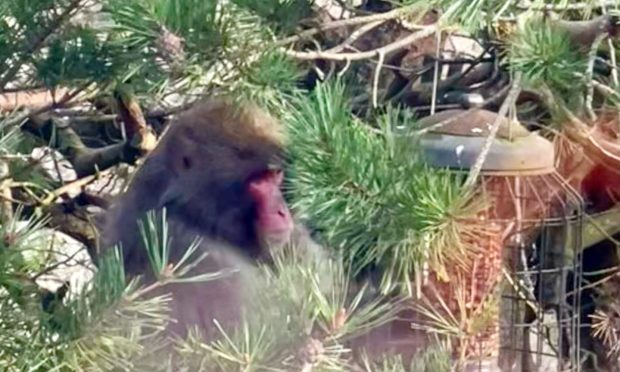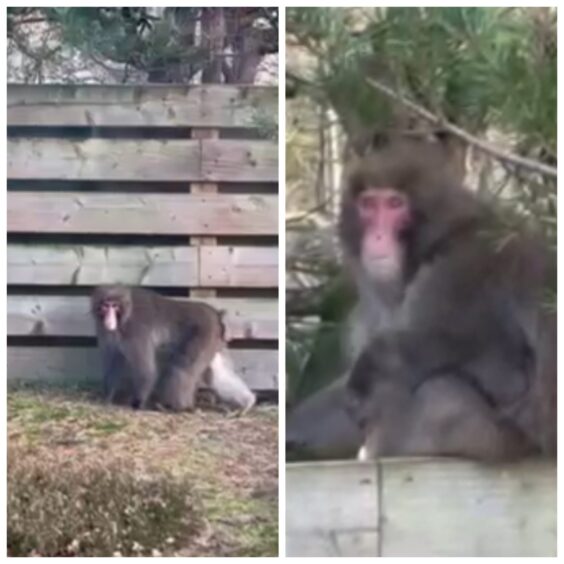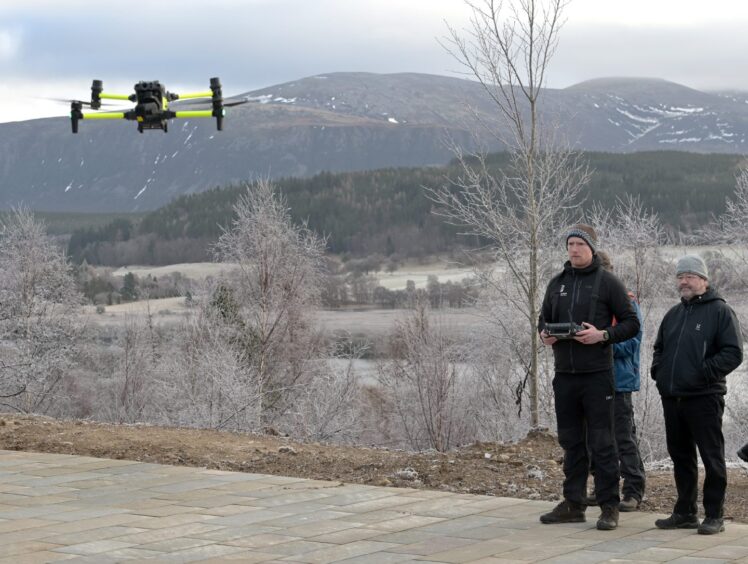Could a missing monkey that has captured the heart of the nation after going on the run actually just be looking for new friends?
That’s the theory of James Anderson, and he is better placed than most to pontificate on the Japanese macaque mindset.
James – a Scot who is an emeritus professor at Kyoto University in Japan – gave us his take on the Highland Wildlife Park escapee.
The academic specialises in animal behaviour, and has studied various types of primate for more than 40 years.
He reckons the monkey may have been forced to flee bullies in his enclosure amid rising tensions during mating season, staging a “giant leap” over a wall into the outside world.
And while its ensuing escapades around the Highlands may seem curious to some, the lonely creature could actually be looking for a new, friendlier, troop to join.
Was missing monkey ‘pushed out’ by love rivals?
The escaped Japanese macaque was first spotted in the village of Kincraig on Sunday, after leaving the park.
It remains on the run and local social media pages have become something of a Planet of the Japes as many have turned the unusual episode into humorous memes.
While many have speculated on its reasons for departing, James thinks he has the answer.
He told us: “Sometimes they actually get pushed out of the group by resident males as a way of reducing the competition for reproductive opportunities.
“It’s now getting towards the end of the mating season, so there’ll be competition for females and some conflict might break out.
“The males can really jump the fences in captive groups just to get away from aggression… And that may be what’s happened here.”
Did monkey think ‘I’ve had enough of this’?
And, despite the best efforts of keepers, it might not be in any hurry to get home.
James added: “I think he’s just decided that he’s had enough of this, so he’s out there.”
“They can travel many kilometres in search of a new group.
“Sometimes these migrant males can actually spend quite a long time on their own before they actually integrate into a new group.”
Of course, while the Highlands boasts a range of animals, any primate looking to find a group of Japanese macaques to latch onto is likely to be left disappointed.
In it native Japan, there would be “thousands and thousands” of snow monkeys to choose from.
Despite the frayed relations in the enclosure, James thinks it might decide to return home…
The professor said: “He could probably go back to the group, especially when the conflict over the access to females goes down.
“He’s got friends and family in the group I’d imagine, so he’ll be missing contact with them and he might eventually make his own way back.”
How would monkey react to being approached?
Mr Anderson also said the Highland Wildlife Park absconder will be hungry and missing physical contact whilst in “no man’s land”, which includes huddling with others at nighttime.
“It’s got to be able to find some warm little nook and cranny somewhere when the temperature goes down at night,” he continued.
Although they are “not especially dangerous”, the primate would not likely attack someone, said the expert.
He also told The P&J that they do not like being touched by strangers, adding: “I think with this individual, its first reaction is going to be to flee as it sees humans approach.”
Positively though, he thinks if the monkey comes close to the park, the staff – who he could possibly recognise – may be able to lure him back with some fruit and “nice treats”.
Search ‘could last some time’
So when might it be caught and taken back to the park?
James said: “It could last some time.
“But in places where I’ve worked before, exactly the same scenario occurred and we were able to reintroduce back to the group.”





Conversation